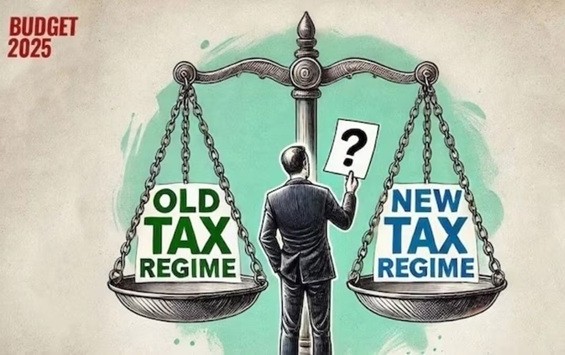
Old Regime Vs New Regime
Tax savings 2025-26: As the new financial year (FY 2025-26) approaches, taxpayers are faced with the decision of choosing between the Old and New Tax Regimes. The upcoming financial year starting April 1, 2025, presents a revised tax structure that could potentially offer significant savings.
Based on the finance minister's statement, salary income up to Rs 12.75 lakh will be tax-free under the revised rebate and slabs in the new regime.In addition, salaried employees will be eligible for a standard deduction of Rs 75,000. Therefore, the new rebate and standard deduction introduced by the finance minister ensure that salary income up to Rs 12.75 lakh remains tax-free.
How much tax do I have to pay? Calculate now
Under the old regime, income up to Rs 2,50,000 is non-taxable, with subsequent brackets at 5%, 20%, and 30% for higher incomes. However, the New Tax Regime 2025 will offer distinct advantages by reducing the tax liability significantly for various income levels.
Here are the tax slabs under New Tax Regime and Old Tax Regime
New Tax Regime 2025-26
Income Tax Slabs (Rs) Income Tax Rate (%)
From 0 to 4,00,000 0
From 4,00,001 to 8,00,000 5
From 8,00,001 to 12,00,000 10
From 12,00,001 to 16,00,000 15
From 16,00,001 to 20,00,000 20
From 20,00,001 to 24,00,000 25
From 24,00,001 and above 30
Old Tax Regime 2025-26
0-2.5 lakh NIL
2.5 to 5 lakh 5% above 2.5 lakh
5 lakh to 10 lakh 12.5K + 20% above 5 lakh
Above 10 lakh 1,12,500 + 30% above Rs 10 lakh
Comparison between the two regimes
A crucial comparison between the two regimes reveals that the new regime could lead to an 8% reduction in taxes for certain taxpayers. For instance, under the current settings, before the changes proposed in Budget 2025, a taxpayer might owe Rs 15,32,960. With the new tax structure, this is reduced to Rs 14,07,120, a difference of Rs 1,25,840. This shift primarily benefits those who may not have extensive investments or deductions under sections like 80C, which traditionally provided relief in the old tax system.
Further analysis indicates that, for an annual income of Rs 2.5 crore, the savings under the new regime are tangible. Prior to the budget adjustments, the tax payable was Rs 95,42,000, but post-adjustment, it would drop to Rs 93,99,000. These savings, amounting to Rs 1,43,000, underline a 1.5% decrease in tax liabilities. This scenario reflects the broader strategy of the new regime to simplify tax filing while offering lower rates without requiring taxpayers to claim numerous deductions.
Medical insurance under two regimes
The new tax regime also presents an opportunity for those paying a premium on medical insurance or home loan interest, which are common deductions in the old regime. Despite the new regime not accommodating these deductions directly, the overall reduced tax rates make up for this by lowering the effective tax burden. For instance, individuals with deductions like a Rs 25,000 medical insurance premium or a Rs 2 lakh home loan interest could still find the new regime advantageous.
The choice between the old tax regime and the new tax regime depends on your total income and the deductions you are eligible for. For individuals with incomes up to ₹12 lakh, the new tax regime is clearly more beneficial due to the rebate, resulting in no tax liability.
For incomes above ₹12 lakh, the decision becomes more nuanced. If your total deductions (excluding the standard deduction) are less than ₹8 lakh for incomes above ₹24.75 lakh, the new tax regime is more beneficial.47 However, if your deductions are higher than this threshold, the old tax regime may be more advantageous.47
For incomes between ₹12 lakh and ₹24.75 lakh, the break-even point where the old regime becomes more beneficial varies. Generally, if your total deductions exceed a certain amount, the old regime will be more beneficial. For example, for an income of ₹15 lakh, you would need to claim at least ₹5,93,750 in deductions to equalize tax liability under both regimes.
